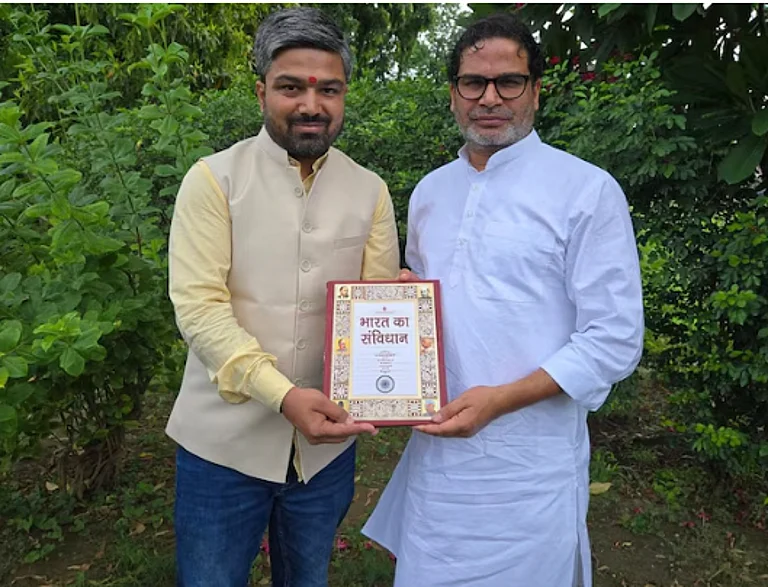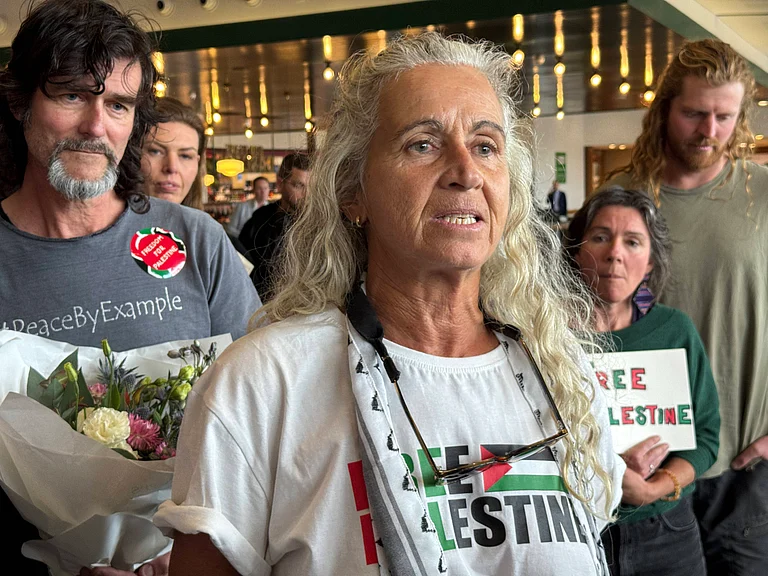In 2006, a Supreme Court bench of justices S.B. Sinha and Dalveer Bhandari commuted the death term of Amrit Singh, then 33, who was convicted of rape and murder of a seven-year-old girl three years earlier in a Punjab village. Both the trial court and the high court had held it to be a fit case for death sentence but the top court thought otherwise. “The manner in which the deceased was raped may be brutal, but it could have been a momentary lapse on the part of appellant (convict), seeing a lonely girl at a secluded place,” Justice Sinha had said in the judgment, converting the death sentence to life term.
In 2004, Dhananjoy Chatterjee, 39, was hanged at the Alipore jail in Calcutta for a similar crime—the rape and murder of a minor at her home in 1990. He was a guard of the apartment where the girl lived.“The courts must not only keep in view the rights of the criminal but also the rights of the victim of a crime and society at large while considering the imposition of appropriate punishment,” an SC bench of judges Madan B. Lokur and K.S. Radhakrishnan had said while upholding the death sentence to convict.
The two cases are classic examples of how judges assess the severity of a crime in their own way, often leading to different degrees of punishment for crimes of similar nature. Such drastic variations have been apparent in hundreds of judgments that the apex court has delivered over a period of time, legal experts say. The argument of “momentary lapse” of reason is often applied to rape and murder cases to lessen the punishment, they add. As a debate rages in the country over the “delay” in hanging four convicts in the 2012 rape and murder of a 22-year-old paramedic in Delhi, the spotlight is firmly on the judiciary in view of the flurry of petitions filed by the guilty.

Over the years, various SC judgments have cited aggravating and mitigating circumstances to award a death sentence as the apex court believes that death is always an exception. Despite that, every judge weighs these circumstances as per his or her own experience in life, perspective, attitude and set of beliefs, among other things. A report on death penalty by the Law Commission in 2015 also admits that in the past decade, the Supreme Court has on numerous occasions expressed concern over arbitrary sentencing in death penalty cases. “The court has noted that it is difficult to distinguish cases where the death penalty has been imposed from those where the alternative of life imprisonment has been applied,” the report said. It had recommended that death penalty be abolished for all crimes other than terrorism-related offences or waging war against the state.
In one of its landmark judgments, the Supreme Court in 1980 upheld the constitutionality of death penalty but confined its application to the “rarest of rare cases”. The purpose was to reduce arbitrariness of death penalty. What made the case striking was an earlier case (Harbans Singh vs the State of UP) cited by Justice P.N. Bhagwati—who had given a dissenting judgment and opposed the death penalty—to highlight an “example of freakishness in the imposition of the death penalty”.
In the case of Harbans Singh vs the State of UP, the Allahabad high court had awarded death sentence to three people—Jeeta Singh, Kashmira Singh and Harbans Singh—in the murder of a family of four. All three challenged the judgment separately in the Supreme Court. An SC bench dismissed Jeet Singh’s appeal and he was hanged. A different bench heard Kashmira Singh’s plea and commuted his death penalty to life term. Harbans Singh’s case came up before yet another bench, which upheld the death penalty. When he was to be executed, his lawyers came to know about the commutation of death sentence of Kashmira Singh. They filed another petition in SC, which then commuted Harbans Singh’s death sentence to life.
Narrating the sequence in his judgment, Justice Bhagwati had said, “This is a classic case which illustrates the judicial vagaries in the imposition of the death penalty and demonstrates vividly, in all its cruel and stark reality, how the infliction of the death penalty is influenced by the composition of the bench.” He also asked, more pointedly, “The question may well be asked by the accused: Am I to live or die depending upon the way in which the benches are constituted from time to time? Is that not clearly violative of the fundamental guarantees enshrined in Articles 14 and 21?”
Forty years later, Justice Bhagwati’s observation still appears relevant as judgments pronouncing death sentence continue to suffer from “judicial vagaries”. The two basic arguments in favour of the death sentence are, (a) it will deter others to commit diabolic and heinous crimes, and (b) people who commit such crimes can neither be reformed nor rehabilitated so they should be eliminated. People opposed to the death sentence criticise the first argument on the basis of data that shows rising cases of rape and murder despite the hanging of Ranga and Billa in the early 1980s and Dhananjoy Chatterjee in 2004.
Even the second argument that they cannot be reformed is highly presumptive, say legal experts. “There is no yardstick to determine as to whether a person will not be reformed inside the jail and repent for his act,” D.K. Garg, a Supreme Court lawyer, says. Garg had appeared for two death convicts, Ranga and Billa, in the Geeta and Sanjay Chopra kidnapping and murder case of 1978. Both were hanged to death. “I don’t know by which logic Indira Gandhi’s killers were hanged and Phoolan Devi’s were not. Both were premeditated murders. Can you say for sure that the criminals involved in the first case couldn’t have reformed?” he asked.
Sunil Gupta, a former law officer of Tihar Jail, says courts do consider the report about jail inmates’ behaviour to decide the quantum of sentence. “I remember, in one case Justice Geeta Mittal, then a judge in the Delhi high court, had commuted the death sentence to life sentence on the basis of a report about an inmate’s good behaviour in jail,” Gupta says. However, he admits that it again varies from judge to judge. “It is not a thumb rule that if the behaviour of a death convict is satisfactory, it will be commuted to life,” he says, adding that sometimes these reports also depend on the rapport an inmate has with his immediate jail in-charge.
In 2014, the SC had commuted the death sentence of 15 convicts to life imprisonment on the ground that inordinate delay by the President in deciding their mercy petitions amounted to undue torture. In a number of cases, on the other hand, the apex court has justified the death sentence with the argument that such crimes shake the conscience of society.
Legal experts say that many cases come under media trial because they appear to have shaken the conscience of society; but they do not necessarily fall in the category of rarest of the rare. “What is the parameter to decide whether the public conscience has shaken or not? And if it is the conscience of a judge which has shaken, then it is bound to be dictated by the prejudices of the particular judge. It cannot be said to be a just situation,” Amit Khemka, a senior lawyer, tells Outlook.
Experts say that at a time when media has become quite influential/powerful, mere exaggeration or wrong presentation of facts of one aspect of a crime can lead to mass protests and the judiciary will treat it as if the crime has shaken society’s conscience. Lawyers appearing for convicts in the 2012 gang rape and murder case strongly argue that media widely reported that iron rods were inserted in the private parts of the victim. They argue that even medical reports don’t say it with certainty that the injuries were caused by iron rods.
Lawyers also say that if a crime is committed in a village, it might not get as much media coverage as one that happens in urban areas like Delhi, where the media’s presence is stronger. “Since every case has its own peculiar circumstances it is very difficult to have a straight-jacket formula to award death. Hence, the best way is to do away with a death sentence,” Khemka adds.


























